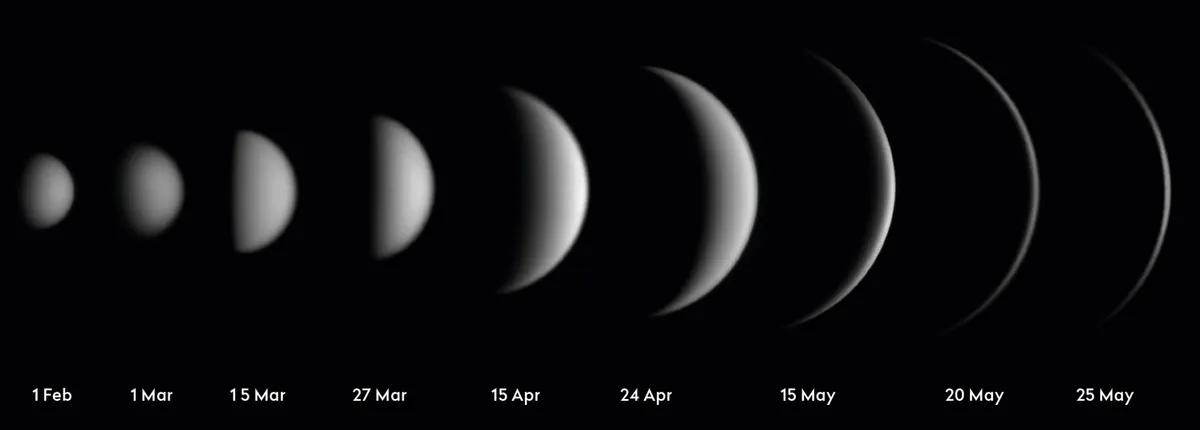Brilliant Venus has been a dominant object in the western half of the sky following sunset for ages, but in May it’s all about to change. Venus is an inferior planet, meaning its orbit is smaller and closer to the Sun than that of Earth.
From Earth we see Venus in different positions around its entire orbit. When it lines up with the Sun on the far side of that orbit, it’s in a position known as superior conjunction.
After this, Venus emerges from within the Sun’s glare into the evening sky where it’s been for the past few months.
Read more:
- How to see the planets in the night sky throughout May 2020
- Capture a shadow cast by the planet Venus
- A guide to the mountains of Venus
It takes a while to ‘get going’ from this point as it’s on the far side of its orbit from Earth. Through a telescope after superior conjunction, the planet looks like a tiny gibbous Moon.
As the days and weeks pass, Venus slowly moves closer to Earth. Its apparent diameter grows and its phase shrinks.
When the Earth–Sun–Venus angle reaches 90˚, we see the planet with a 50% phase, or thereabouts. An atmospheric phenomenon known as the Schröter effect, causes the 50% phase to appear a few days early in the evening sky.
This point in Venus’s orbit was last reached on 27 March.
After this date Venus’s apparent size starts to grow rapidly as does the decrease in phase. At the start of May Venus shows a 39 arcsecond disc, 24% illuminated.

However, by mid-month, the apparent diameter increases to 49 arcseconds with a phase dropping to 10%. This is a stunning sight if you can catch the planet through a telescope.
The rapid increase in apparent size coupled with the rapid decrease in phase is due to the fact that Venus is swinging around the part of its orbit closest to Earth.
It also means Venus isn’t far from lining up with the Sun on the Earth side of its orbit, a position known as inferior conjunction.
This next occurs on 3 June and represents the planet’s transition from the evening sky to the morning sky.
When Venus lines up with the Sun at inferior conjunction it typically passes north or south of the Sun’s disc in the sky.
On rare occasions it appears to pass across the Sun’s face: a transit of Venus. The last of these occurred in 2012 and the next won’t happen until 2117.
During the next inferior conjunction on 3 June, Venus passes half-a-degree north of the Sun’s centre, a condition that will place the planet just one-quarter of a degree from the Sun’s northern limb; sadly, too close to observe safely.
Pete Lawrence is an experienced astronomer and a co-host of The Sky at Night. This article originally appeared in the May issue of BBC Sky at Night Magazine.

